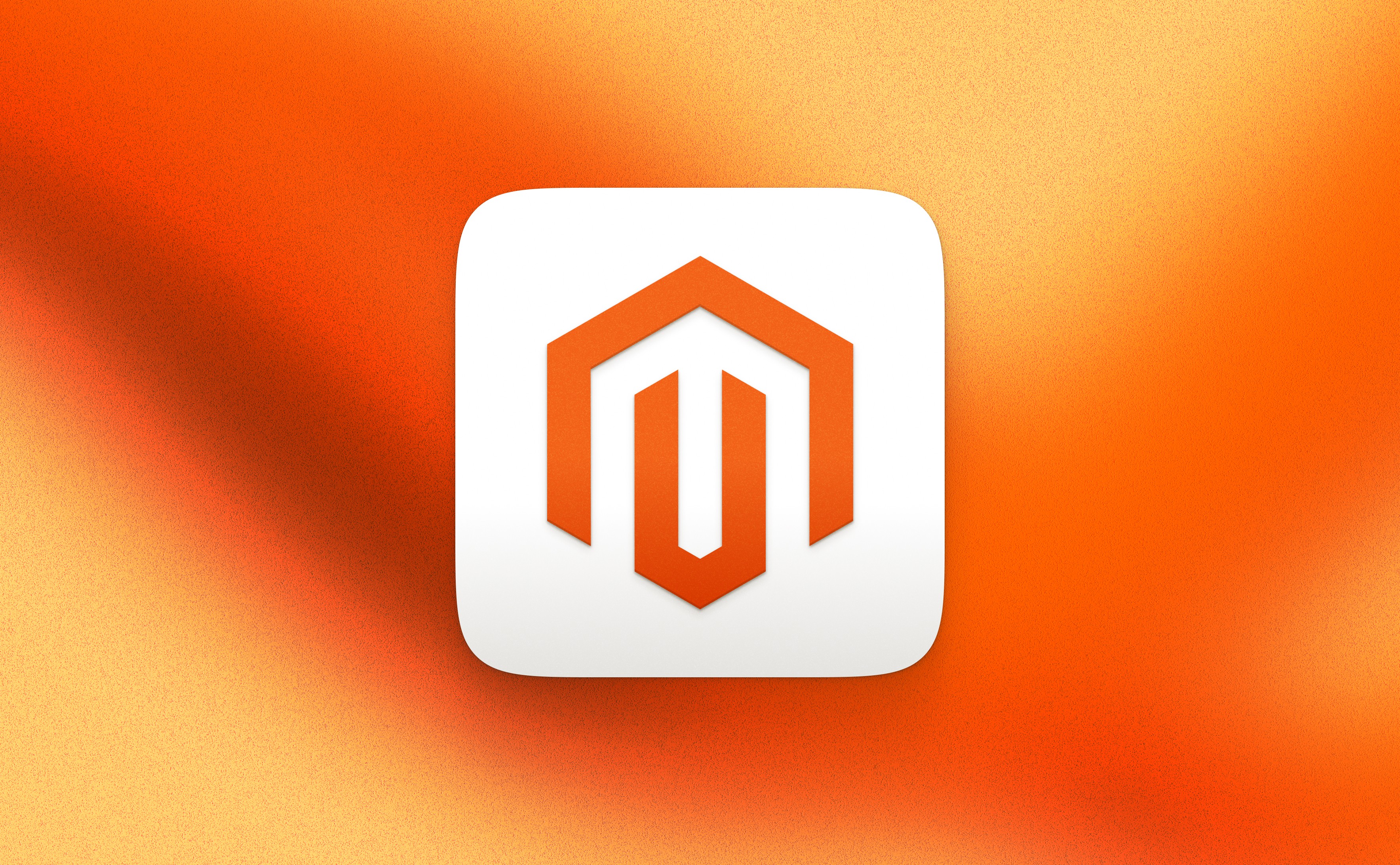Magento 2 Inventory Management: Key Insights

- Magento 2 Inventory Management: Overview
- Key Features Of Magento 2 Inventory Management
- Setting Up Inventory in Magento 2
- Managing Stock Movements in Magento 2
- Advanced Inventory Strategies with Magento 2
- Best Practices for Magento 2 Inventory Optimization
- Troubleshooting Common Inventory Issues
- Bottom Line
- Magento 2 Inventory Management: Overview
- Key Features Of Magento 2 Inventory Management
- Setting Up Inventory in Magento 2
- Managing Stock Movements in Magento 2
- Advanced Inventory Strategies with Magento 2
- Best Practices for Magento 2 Inventory Optimization
- Troubleshooting Common Inventory Issues
- Bottom Line
With over five billion internet users worldwide, the number of people making purchases online is steadily increasing. In 2025, global retail e-commerce sales are projected to exceed 4.3 trillion U.S. dollars, and this figure is expected to reach new heights in the coming years.
As online stores grow and manage more sophisticated operations, maintaining accurate inventory becomes a true challenge—and a necessary one. Magento 2 rises to the occasion with a robust inventory management system that gives sellers full visibility of their stock, streamlines warehouse operations, and keeps products available across multiple sales channels.
In this guide, we’ll walk through how Magento 2’s inventory tools—from multisource inventory to real-time stock updates—help businesses stay organized, meet customer demand, and grow smoothly in a fast-paced e-commerce world.
Magento 2 Inventory Management: Overview
Businesses have complete control over their inventory using Magento 2, which offers a versatile system that adjusts to your stock management style. Whether you're dealing with a fast-moving bestseller or a limited-edition release, Magento lets you set precise rules for each product. You can easily configure out-of-stock thresholds, enable or disable backorders, and define minimum and maximum quantity limits to fit your fulfillment strategy.
With Magento's Multi-Source Inventory (MSI), you have real-time updates about your inventory locations—warehouses, retail stores, or third-party logistics centers. This single view keeps stock levels up-to-date, facilitating better and faster decision-making and fewer errors and delays.
One of the platform's most powerful features is its real-time tracking of stock. You don't have to constantly or manually update each sale, return, restocking, or adjustment as the system is automatically updated.
Magento tracks each SKU down to the unit, helping you proactively detect potential stockouts and take corrective action before they affect your customers. Whether you're making changes to a single product's details or updating inventory in bulk, the procedure is precise and smooth.
All these features come together to create a smart, scalable inventory system that grows with your business. With Magento, you can keep your operations running smoothly, maintain a balanced inventory, and ensure your customers are always satisfied.
Key Features Of Magento 2 Inventory Management
1. Enhanced Product Management Operations
This feature makes it easy to handle large-scale stock management, customize inventory properties, and update multiple locations at once. With tools like stock status controls, customizable inventory rules, and bulk import/export options, businesses can effortlessly manage thousands of SKUs. This helps them to scale operations without compromising control or quality.
2. Stock Management and Tracking
Magento provides a full picture of inventory movement by tracking all stock activity—whether incoming purchases, customer orders, returns, cancellations, or even manual updates. Every change is tracked, providing a full audit trail for faster identification of trends, fraud prevention, and rapid resolution of any discrepancies. It's crucial to make well-informed decisions, stay compliant with regulations, and effectively manage inventory for long-term success.
3. Low Stock Notifications Alert
To help businesses avoid lost sales and customer dissatisfaction, Magento facilitates automated low stock notifications. Magento offers automated low stock notifications. Merchants can set specific thresholds for individual products or entire categories, and the system will alert them when stock levels dip below those limits. By acting as an early warning system, these proactive messages reduce the chance of stockouts and enable prompt reordering. Businesses can increase consumer loyalty and maintain sales by doing this, as it ensures that their most popular and best-selling products are always available.
4. Multisource Inventory (MSI) Functionality
Magento 2’s Multisource Inventory (MSI) functionality revolutionizes stock management for multi-location businesses. Products can be linked to various sources—like regional warehouses, retail outlets, or dropshipping partners—and the system intelligently figures out the best source to fulfill an order. It considers product availability, customer location, and the speed at which the delivery can be performed. This intelligent source selection not only increases order accuracy but also reduces delivery time, maximizes shipping cost savings, and provides a more flexible fulfillment approach for global growth operations.
5. Backorders and Pre-orders
Magento 2 also allows businesses to have backorders and pre-orders globally or at the product level. Backorders are an easy way of dealing with temporarily out-of-stock products, allowing customers to order products that will be dispatched when they become available on the shelves. On the other hand, pre-orders enable businesses to take products to market early, enabling them to gauge interest earlier and create some buzz around the launch. Such features are most useful during new product launches, promotional campaigns, and high seasonal demand periods, enabling brands to secure sales and manage inventory flow strategically.
6. ERP Integration
Magento 2 is designed to work effortlessly with a wide range of ERP systems and third-party inventory solutions, thanks to its robust APIs. These integrations create a seamless exchange of data between your store and backend systems, ensuring that everything—from stock levels and order details to shipping updates and purchase history, stays perfectly in sync.
This real-time link eliminates delays and mismatches, so you're always operating with the right information. It also facilitates better team collaboration—such as between sales, procurement, accounting, and warehousing—making operations more efficient and boosting overall productivity throughout your company.
7. Supply Prediction
One of the most impressive aspects of Magento 2's inventory management is how it can analyze past sales data to predict what inventory will be needed in the future. Apart from reducing holding costs and evading overstocking and understocking issues, this future-oriented technique makes the supply based on demand simpler. Organizations can use this technique to make more informed restocking decisions. They can understand seasonal trends, buying habits, and the rate at which things are selling out.
Looking to Scale Your Magento Store Efficiently?
Let's talkLoading...
Setting Up Inventory in Magento 2
To make the most of Magento 2's stock management features, it is important to set up the system according to your eCommerce business needs. This configuration includes a few important steps to make stock management smooth and customer experience seamless.
1. Customizing Product Attributes
You have the flexibility to add or modify product attributes based on how many items you want to keep in stock. To set up a new attribute, just head over to Stores > Attributes > Product and hit "Add New Attribute." Here, you can fill in details like the attribute name, the input type (like a text field or dropdown), and the attribute code. Make changes to the attribute choices based on the types of products you have, and don't forget to save your changes.
2. Setting Stock Quantities and Thresholds
This step is about setting your inventory levels and establishing alert thresholds. Within the Shopping Cart tab, you can limit the Maximum Quantity Allowed per order. This will keep bulk buying under control. And then within the Out of Stock Threshold tab, you can set the quantity that makes a product out of stock. Also, the Only X Left Threshold enables you to create urgency through the display of a low-stock notice to your customers when inventory drops to a certain minimum level.
3. Linking Products to Warehouses
If your business operates with multiple storage locations, you can allocate products to specific warehouses. Magento's Multi-Source Inventory (MSI) functionality makes it easy to distribute products across multiple sources. You can create and manage as many warehouses as you need, and you can determine how to distribute inventory between them. This setup not only accelerates delivery times but also ensures that stock is distributed efficiently according to what is in demand in different areas.
Managing Stock Movements in Magento 2
Monitoring stock movement efficiently is crucial to maximizing Magento 2's inventory management features. Magento's inventory features offer strong support for tracking, managing, and recording stock level changes at every stage of your supply chain.
1. Monitoring Inventory Transactions
Magento offers end-to-end monitoring of everything that happens with your inventory—purchases, sales, internal stock movement, or physical counts. This visibility helps you monitor inventory flow across your operations and make better decisions.
From the admin panel, navigate to Inventory → Inventory Movement to see a full record of all stock transactions. You can even export this data in a CSV file format for record-keeping or audit purposes.
2. Processing Returns and Refunds
Return and refund procedure is made simpler as it is already embedded in the inventory system. After returning a product, you need to select it within your admin panel and mark as a refund started.
Customers can also submit Return Merchandise Authorization (RMA) requests to return products or obtain refunds. Such requests will be pending until someone manually updates them to Approved, Declined, or Solved. For ease of use, you can turn on a Shipping Labels extension, enabling customers to automatically print return labels for shipping carriers such as FedEx, UPS, or DHL. As soon as a refund is approved, you can then just select the right payment method and indicate that it's full or partial. To do a partial refund, you can indicate the corrected figure. Also, if the item being returned is good enough to sell again, don't forget to use the Add to Stock feature—this will ensure your inventory is up to date.
3. Live Inventory Updates
Magento keeps your stock levels updated in real time, which is super helpful. These quick updates give you a clear picture of your current inventory, helping to cut down on mistakes and lowering the chances of running out of stock or overselling. The system takes care of adjusting inventory numbers automatically based on transactions, so you can say goodbye to the hassle of manual tracking.
Advanced Inventory Strategies with Magento 2
The inventory management features of Magento 2 extend beyond straightforward tracking. They offer cutting-edge technologies that help businesses successfully meet customer demands and streamline operations. Below are some of the advanced inventory techniques you can apply using Magento 2.
1. Using Bundled Products to Optimize Inventory
Bundle products, which are essentially groups of individual items combined into a single composite product, are easy to create and sell using Magento 2. This is an excellent means to encourage clients to purchase in bulk or provide complementary items.
You can keep your inventory looking fresh and appealing by pairing popular items with those that don’t sell as quickly or that you have in surplus. Plus, by targeting specific customer segments that tend to purchase similar products together, this approach not only increases overall sales but also makes the most of your warehouse space.
2. Integrating Dropshipping for Scalable Fulfillment
Companies that don’t want to hold inventory themselves can benefit from dropshipping. Magento 2 accommodates dropshipping operations using extensions such as Dropshipping for Magento 2. These applications enable you to:
- Maintain a network of third-party suppliers
- Distribute inventory across multiple locations or warehouses
- Assign specific products to designated suppliers
- Restrict supplier access to order information
- Automatically export orders to external vendors
- Estimate shipping rates based on location
- Utilize MSI (Multi-Source Inventory) for efficient order routing
This approach is particularly useful for businesses looking to scale without investing heavily in warehouse infrastructure.
3. Managing Pre-Orders and Backorders Efficiently
Magento 2 has a great pre-order and backorder support, which helps the business generate more sales and provide a higher level of customer satisfaction.
- Customers can place orders for out-of-stock items through backorders, ensuring they will receive them when they become available.
- Pre-orders allow vendors to list products before they're released, creating buzz and establishing interest before release.
Both strategies help manage inventory levels dynamically and reduce the risk of missed sales opportunities.
Best Practices for Magento 2 Inventory Optimization
To get the most out of your Magento inventory management, you must follow these proven practices:
1. Use Demand Forecasting: Take advantage of analytics and seasonal trends to forecast your inventory needs. This way, you can steer clear of overstocking while still satisfying demand during those busy peak seasons.
2. Apply the ABC Analysis Method: Classify inventory into three categories:
- A: High-value, low-frequency sales
- B: Moderate value and movement
- C: Low-value, high-frequency sales
This enables focused inventory strategies and optimized capital usage.
3. Prepare for Seasonal Surges & Dips: Magento supports dynamic pricing and inventory adjustments, enabling fast adaptation during festivals, holidays, or off-peak periods.
4. Build Good Relationships With Your Suppliers: A Transparent supply chain and better collaboration reduce lead times and improve restocking efficiency.
5. Make a Plan to Reduce Your Inventory: Slow-moving items can be sold off through promotions, flash discounts, or attractive bundles.
Troubleshooting Common Inventory Issues
1. Synchronisation Lag: Problems with API or delays from a third party can cause sync lag. However, contingency plans and periodic testing ensure data integrity.
2. Discrepancies in Inventory Quantities: There will be negligible chances of a difference between real and digital inventory because Magento keeps a history log of stock records.
3. Out-of-Stock Situations: Magento provides alternate product recommendations and automatic backorder management. Real-time syncing across channels reduces overselling and enhances customer trust.
Bottom Line
Magento 2 Inventory Management is all about streamlining the supply chain process. It includes everything from handling inventory from multiple sources and ensuring stock visibility through to demand forecasting and integration with ERP systems. The goal is to enhance corporate agility, enhance financial management, and ultimately ensure customer satisfaction.
Being at the top of your game with your inventory management strategy can boost the operational efficiency of your business. WAC is one of the leading Magento development companies that provides scalable solutions, advanced technical knowledge, and a successful track record. If you need to tailor your Magento stock management system or want to deploy some advanced modules, don't hesitate to reach out to us! And if you're looking to scale your team, you can hire certified Magento developers from WAC to bring in dedicated, platform-specific expertise that fits your needs.
Need Help with Magento Inventory Management?
Reach out to usLoading...
- Complete Guide to Magento (Adobe Commerce) eCommerce Platform
- Top 10 Magento Websites: Best eCommerce Websites Using Magento (Adobe Commerce)
- Adobe Commerce vs Commercetools: Choosing the Right eCommerce Platform for Scalable Success
- Magento Alternatives: 8 Powerful Competitors for Scalable, Modern E-Commerce Solutions
- Magento (Adobe Commerce) vs WooCommerce: Comparison of E-commerce Platforms
Discover Digital Transformation
Please feel free to share your thoughts and we can discuss it over a cup of tea.









